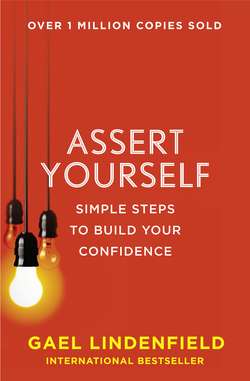Читать книгу Assert Yourself: Simple Steps to Build Your Confidence - Gael Lindenfield, Gael Lindenfield - Страница 8
ОглавлениеIntroduction
This book is based on an Assertiveness Training Programme which I used with a variety of groups over many years. It is, by no means, a definitive model either for myself or anyone else. It can and should be adapted, abridged, expanded – or indeed abandoned according to your own individual needs. In writing it, I have aimed to provide the following:
1. A Concise, Simple Account of the Theory and Principles
– as they are applicable to both men and women living within our Western culture.
Much of Assertiveness Training is concerned with changing or adapting our values, ideas and philosophy. Often we are unassertive merely because we think that it is wrong to be assertive. These thoughts may be quite deeply rooted in our minds as they are often placed there in early childhood and are embedded in the values of our culture. Our first task must, therefore, be to ‘reprogramme’ our minds by replacing the old unassertive values and thoughts with a more positive philosophy. From my own personal experience and the experience of people on my courses it seems that the repetition of appropriate quotations and proverbs is a useful way of effecting this change.
Throughout the book you will notice a number of these quotes and proverbs. They have been placed in boxes so that they can be easily identified and used as an occasional reminder of the philosophy of assertiveness. In my groups, I often write some out on large wall posters and suggest that this can be done at home or in the office as well.
I appreciate that some people might find them an irritating distraction from the text. If this should happen please ignore them and read on!
2. A Handbook for Self-Help Groups
Assertiveness Training is most often undertaken in a group situation. After all, old habits certainly do die hard but they do seem to vanish more quickly when we receive support and encouragement from others who can understand what the battle is all about.
Part Two of this book offers a programme of exercises which could be completed in approximately eight weekly sessions of two hours each. The appropriate theory can be introduced in the form of posters and handouts derived from the text in Part One.
By using the book in this way, the responsibility for leading the group could be shared by some or all of the participants.
3. A Handbook for Individuals
If for some reason you are unable, or unwilling, to join a self-help group, this basic programme can be adapted for use on your own at home.
At the end of each practical exercise I have made some suggestions about how you could achieve this. I suggest, as with self-help groups, you could work on one short session each week over a period of two months. It is important to cover the basic ground very thoroughly and not to try too much too quickly. You may need more self-discipline and motivation to work in this way, but it should still be possible to make some effective progress.
